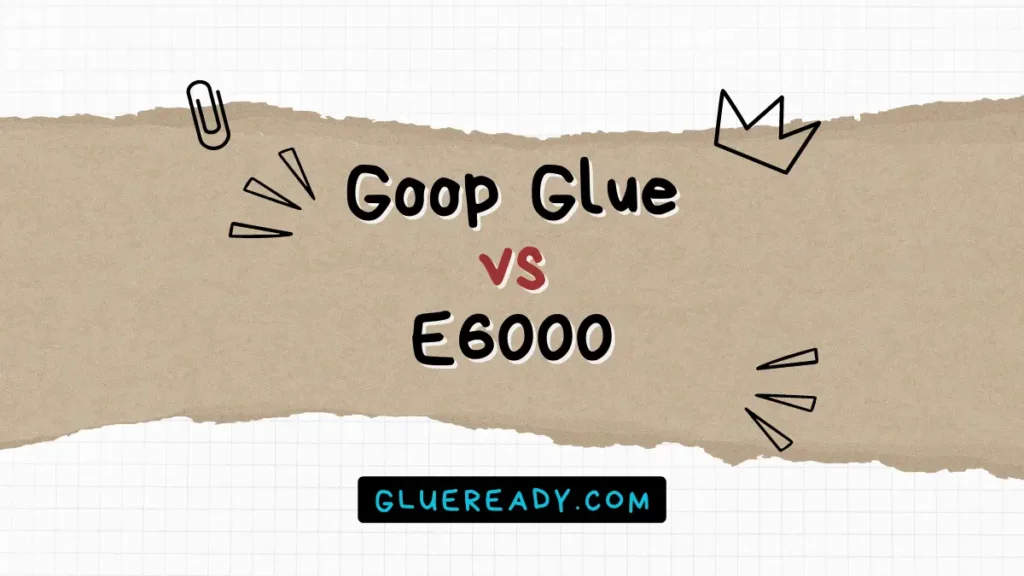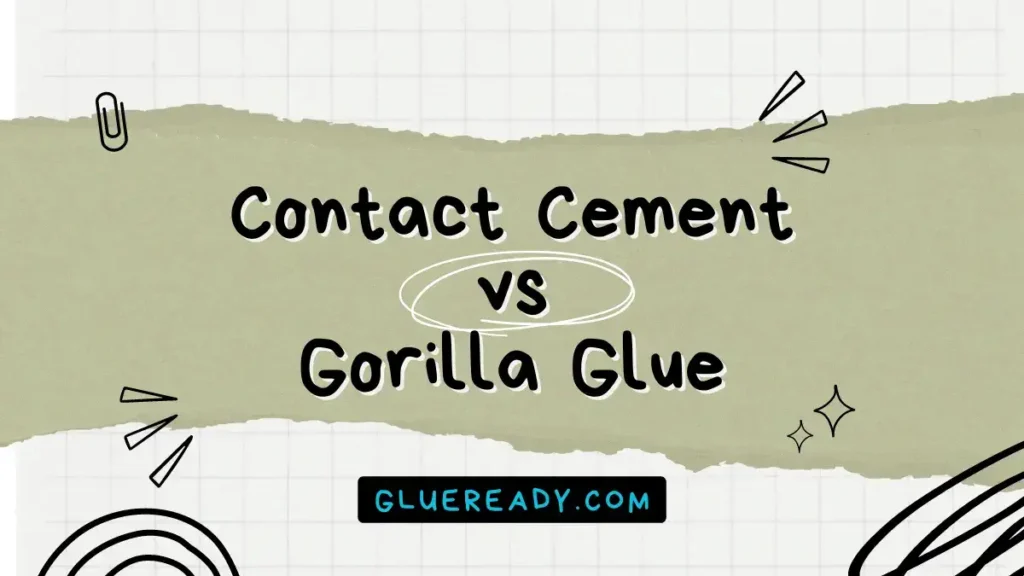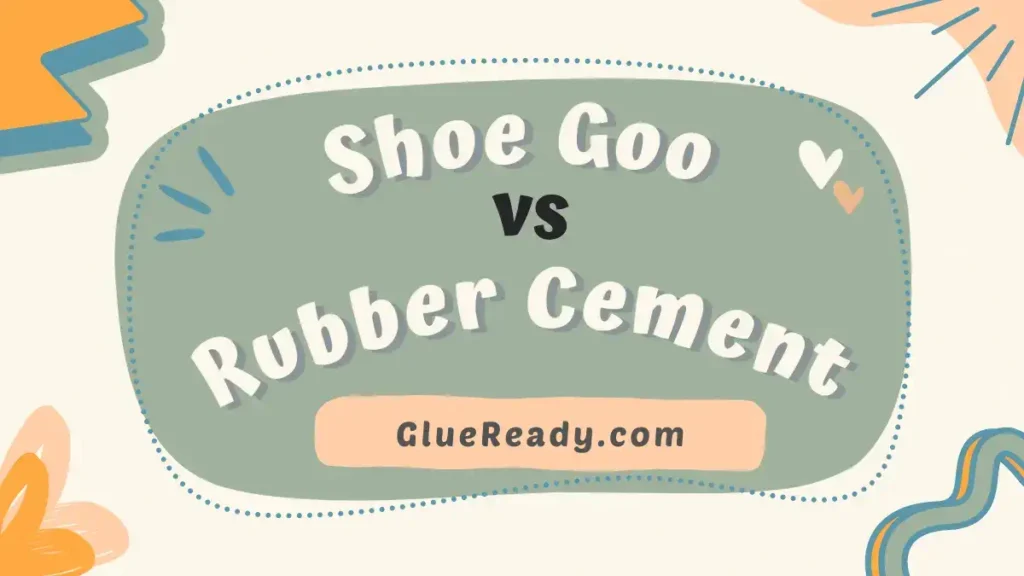E6000 vs Gorilla Glue | In-Depth Comparison

Two of the most popular and versatile glues on the market are E6000 and Gorilla Glue. But which one is better for your needs?
E6000 is better than Gorilla glue for household items such as fabric, glass, wood, and plastic. Gorilla Glue is better for metal, concrete, flooring, and outdoor use.
In this article, I will compare E6000 vs Gorilla Glue across various factors to help you determine which one is best suited for your needs.
Read More: E6000 vs B7000
About E6000
E6000 is a solvent-based adhesive renowned for its strength, flexibility, and durability.
It can bond to almost any material, including wood, metal, glass, fabric, plastic, rubber, leather, and more. It is also waterproof, washer and dryer safe, paintable, and self-leveling.
E6000 is ideal for repairing or creating items that require a flexible and permanent bond. It is also easy to use, as it does not require any mixing or clamping.
The only thing you need to do is apply a thin layer of E6000 to both surfaces, press them together, and let it cure for 24 hours.

About Gorilla Glue
Gorilla Glue is an adhesive made of water-based adhesive that is known for its exceptional strength and versatility.
It can bond to virtually any surface, including wood, stone, metal, ceramic, foam, glass, and more. It is also 100% waterproof and resistant to extreme temperatures.
Gorilla Glue works by expanding up to 3 times its volume as it cures, filling the gaps and creating a tight bond.
Gorilla Glue is ideal for projects that require a strong and durable bond. It is also easy to use, as it only requires a small amount of glue and some moisture to activate it.
You just need to dampen one surface, apply a thin layer of Gorilla Glue to the other surface, press them together, and clamp them for 1-2 hours.

E6000 vs Gorilla Glue Comparison Table
| Feature | E6000 | Gorilla Glue |
| Type of adhesive | Solvent-based | Water-based |
| Drying time | 5 minutes to 24 hours | 10 to 45 seconds |
| Curing time | 24 to 72 hours | Up to 24 hours |
| Flexibility | High | Low |
| Odor | Strong and smelly | Mild and odorless |
| Tensile strength (lb/in²) | 3500 | 3626 |
| Heat resistance (°F) | Up to 180°F | Up to 220°F |
| Toxicity | High | Low |
| Best for | Household items such as fabric, glass, wood, plastic, etc. | Outdoor or heavy-duty projects such as metal, concrete, flooring, etc. |
Differences Between E6000 and Gorilla Glue
E6000 and Gorilla Glue are both popular types of adhesives that can be used for various purposes. However, they have some differences that may affect your choice depending on your needs.
Here are some of the main differences between E6000 and Gorilla Glue:
Bond Strength
Gorilla Glue is stronger than E6000 when it comes to bonding metal, concrete, flooring, and outdoor use.
Gorilla Glue can sustain a pull of 3626 lb/in², while E6000 can sustain a tension of 3500 lb/in².
However, E6000 is more flexible than Gorilla Glue, which may be preferable for some applications.
Drying Time
Gorilla Glue is faster than E6000 in drying and curing.
Gorilla Glue takes only 10 to 30 seconds to dry and 24 hours to cure, while E6000 takes 5 to 10 minutes to dry and 72 hours to cure.
This means that Gorilla Glue is more convenient for quick projects, but E6000 may allow more time for adjustments.
Odor and Toxicity
E6000 is more smelly and toxic than Gorilla Glue.
E6000 has a strong solvent odor that may cause headaches or nausea, and as a result of its chemicals, the skin, eyes, and respiratory system can be irritated.
Gorilla Glue is odorless and non-toxic once cured, but it can still cause skin irritation or allergic reactions if not handled properly.
Compatibility
E6000 is better than Gorilla Glue for household items such as fabric, glass, wood, and plastic.
E6000 is more versatile and can bond to almost any material, while Gorilla Glue is more limited and may not work well with some plastics or smooth surfaces.
E6000 is also paintable and washer-safe, while Gorilla Glue is not.
Water Resistance
Both E6000 and Gorilla Glue are waterproof and can withstand extreme temperatures.
However, Gorilla Glue is more water-activated and heat-resistant than E6000.
Gorilla Glue expands when exposed to water and can withstand temperatures up to 220°F, while E6000 shrinks when exposed to water and can withstand temperatures up to 180°F.
Which One to Use? E6000 or Gorilla Glue?
There is no definitive answer to which one to use, as it depends on your specific project and preferences.
However, based on the differences I mentioned in my previous message, you can consider some general guidelines:
Use Gorilla Glue if you need a strong, fast, and outdoor-friendly glue for metal, concrete, or flooring projects.
Gorilla Glue is also more heat-resistant and water-activated than E6000.
Use E6000 if you need a flexible, versatile, and indoor-friendly glue for fabric, glass, wood, or plastic projects.
E6000 is also more paintable and washer-safe than Gorilla Glue.
Of course, these are not absolute rules, and you may find exceptions or personal preferences that differ from these suggestions.
Ultimately, the best way to decide which one to use is to test them out yourself and see which one works better for your needs.
How Do I Remove Gorilla Glue from My Hands?
There are different methods to remove gorilla glue from hands, depending on whether the glue is wet or dry.
You can wipe off wet glue with a dry cloth or paper towel, and then scrub it with soap and water.
If the glue is dry, it can be soaked in cold water to freeze and crack it, and then scraped off with a spoon or an edge.
Alternatively, it can be dissolved with acetone, which is a liquid that can be found in nail polish removers. Acetone can be applied with a cotton pad or by soaking the hand or fingers in it.
After removing the glue, it is recommended to use rubbing alcohol, paint thinner, or citrus fruits to remove any residue, and then moisturize the skin with oil or lotion.
What Glue Is Stronger Than Gorilla Glue?
Among the strongest glues on the market, Gorilla Glue is among the best, but it may not be the best choice for every project.
Epoxy is stronger than Gorilla Glue because it can penetrate deeper into the surfaces and create a stronger bond.
What Should You Not Use E6000 On?
It is not recommended to use E6000 on polyethylene terephthalate (PET), fluoropolymers (like Teflon), polystyrene, nylon, or polypropylene.
Is Gorilla Glue The Strongest Super Glue?
Gorilla Glue is one of the strongest super glues on the market, along with Loctite and Krazy Glue. Gorilla Glue is known for its impact resistance, water resistance, and versatility.
Final Thoughts
In the showdown between E6000 vs Gorilla Glue, there’s no clear winner, as it ultimately depends on your specific project requirements.
If you’re looking for a versatile, all-purpose adhesive with excellent flexibility, E6000 might be the better choice.
On the other hand, if you primarily work with porous materials and need a strong, fast-bonding adhesive, Gorilla Glue should be your go-to option.
Remember, both E6000 and Gorilla Glue have earned their reputation for a reason. Whichever adhesive you choose, you can trust that you’re getting a reliable and robust solution for your bonding needs.







